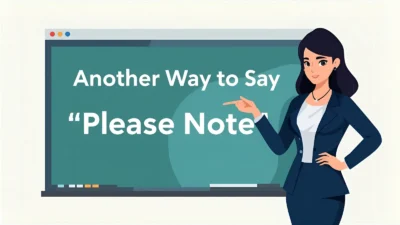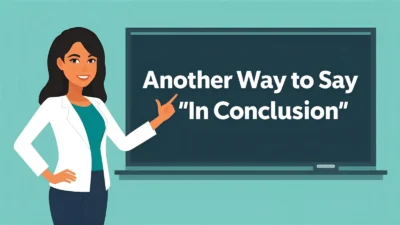The phrase “Hope all is well” is a polite, professional, and friendly way to begin an email, message, or conversation. It shows concern for the recipient’s well-being while setting a positive tone. However, since it’s widely used, relying on it too often can make your communication feel generic or repetitive. By exploring alternatives, you can add freshness, sincerity, or professionalism depending on the context.
In this article, you’ll discover 45 thoughtful alternatives to “hope all is well,” with meanings, explanations, examples, best uses, and tones.
1. I Hope You’re Doing Well
Meaning: A direct, polite wish for well-being.
Example: “I hope you’re doing well and had a great weekend.”
Best Use: Professional emails, formal writing.
Tone: Polite, neutral, professional.
2. I Trust This Message Finds You Well
Meaning: Formal expression of good wishes.
Example: “I trust this message finds you well and in good health.”
Best Use: Business emails, formal letters.
Tone: Formal, courteous.
3. I Hope You’re Having a Good Day
Meaning: A light and friendly greeting.
Example: “I hope you’re having a good day so far.”
Best Use: Casual emails, workplace chats.
Tone: Warm, approachable.
4. I Trust You’re Doing Well
Meaning: Confident well-wishing.
Example: “I trust you’re doing well and everything is going smoothly.”
Best Use: Formal or professional emails.
Tone: Polite, formal.
5. I Hope Things Are Going Great for You
Meaning: Expresses positive hopes for someone’s current situation.
Example: “I hope things are going great for you and your team.”
Best Use: Semi-formal, casual business writing.
Tone: Optimistic, friendly.
6. I Hope You’re Having a Wonderful Week
Meaning: Adds specificity by referencing time.
Example: “I hope you’re having a wonderful week so far.”
Best Use: Weekly check-ins, polite conversations.
Tone: Warm, cheerful.
7. I Trust You Had a Pleasant Weekend
Meaning: Formal acknowledgment of recent time.
Example: “I trust you had a pleasant weekend and are ready for the week ahead.”
Best Use: Monday emails, formal contexts.
Tone: Courteous, professional.
8. I Hope Everything’s Going Well with You
Meaning: General expression of goodwill.
Example: “I hope everything’s going well with you and your family.”
Best Use: Professional and personal emails.
Tone: Neutral, kind.
9. I Hope You’re in Good Health
Meaning: Focuses on well-being.
Example: “I hope you’re in good health and staying safe.”
Best Use: Formal, health-conscious communication.
Tone: Respectful, caring.
10. I Hope All Is Going Smoothly
Meaning: Expresses positivity about ongoing matters.
Example: “I hope all is going smoothly with your new project.”
Best Use: Work-related emails, updates.
Tone: Supportive, professional.
11. I Hope Life Is Treating You Well
Meaning: A warmer, more personal greeting.
Example: “I hope life is treating you well these days.”
Best Use: Friendly professional or personal messages.
Tone: Warm, caring.
12. I Trust You’re Having a Productive Week
Meaning: Encourages positive progress.
Example: “I trust you’re having a productive week so far.”
Best Use: Workplace updates, team check-ins.
Tone: Professional, encouraging.
13. I Hope You’re Doing Great
Meaning: Cheerful and positive greeting.
Example: “I hope you’re doing great and enjoying the new role.”
Best Use: Semi-formal, friendly professional notes.
Tone: Upbeat, positive.
14. I Trust All Is Going Well on Your End
Meaning: Formal acknowledgment of another’s situation.
Example: “I trust all is going well on your end with the transition.”
Best Use: Professional correspondence.
Tone: Formal, respectful.
15. I Hope You’re Having a Pleasant Morning
Meaning: A time-specific well-wish.
Example: “I hope you’re having a pleasant morning so far.”
Best Use: Morning emails, polite greetings.
Tone: Friendly, courteous.
16. I Hope All’s Well with You and Yours
Meaning: Includes family or close circle.
Example: “I hope all’s well with you and yours during this season.”
Best Use: Personal-professional blend.
Tone: Warm, caring.
17. I Trust Everything Is Fine with You
Meaning: Formal, professional assurance.
Example: “I trust everything is fine with you and the project deadlines.”
Best Use: Business or academic communication.
Tone: Formal, respectful.
18. I Hope You’re Doing Fantastic
Meaning: Expresses enthusiasm and positivity.
Example: “I hope you’re doing fantastic this week.”
Best Use: Friendly workplace or personal notes.
Tone: Energetic, upbeat.
19. I Trust You’re Keeping Well
Meaning: Formal but kind expression of well-being.
Example: “I trust you’re keeping well during these busy times.”
Best Use: Polite, professional greetings.
Tone: Courteous, formal.
20. I Hope This Week Has Been Kind to You
Meaning: More personal and reflective.
Example: “I hope this week has been kind to you and your team.”
Best Use: Friendly professional emails.
Tone: Warm, thoughtful.
21. I Trust You’re Enjoying the Season
Meaning: Adds seasonal or contextual relevance.
Example: “I trust you’re enjoying the season and staying warm.”
Best Use: Holiday or seasonal messages.
Tone: Personal, considerate.
22. I Hope All’s Going Great for You Lately
Meaning: Current-focused goodwill.
Example: “I hope all’s going great for you lately with work and life.”
Best Use: Casual-professional notes.
Tone: Friendly, optimistic.
23. I Trust You’re Having a Good Day So Far
Meaning: Polite daily greeting.
Example: “I trust you’re having a good day so far.”
Best Use: Daily workplace communication.
Tone: Professional, polite.
24. I Hope Everything’s Fine at Your End
Meaning: A respectful check-in.
Example: “I hope everything’s fine at your end with the transition.”
Best Use: Business correspondence.
Tone: Formal, considerate.
25. I Hope You’re Doing Well Today
Meaning: Simple, polite version of the original phrase.
Example: “I hope you’re doing well today.”
Best Use: Everyday emails, formal and casual.
Tone: Neutral, professional.
Conclusion
The phrase “Hope all is well” is polite and professional, but using alternatives lets you adjust your tone—from formal (I trust this message finds you well) to friendly (I hope you’re doing great) to warm (I hope all’s well with you and yours). By tailoring your greeting, you can start your emails or conversations on a note that feels fresh, thoughtful, and fitting for your audience.



